Toilet bowl: structure and possible variations
Which is better to choose: built-in toilet cistern, single or suspended? How and at the expense of what is the work of the drain system? Answers to these questions can be found in this article.
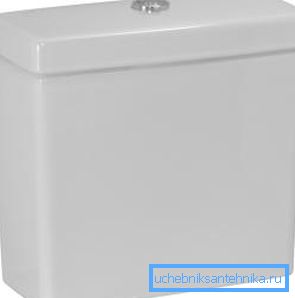
Types of drains
Want to know if toilet bowls are sold separately? Of course, it is precisely for this reason that one should understand their differences in order to acquire exactly the model that fits your toilet best.
Location
First of all, you need to choose the general concept of the interior of the room and decide on the most successful location of the drain tank.
The following options are most popular:
- Fused or compact. In this example, which today can be found in most apartments of multi-storey buildings, the tank is installed on a special shelf, which is part of the bowl, and creates an integral structure with it. Pros:
- relatively low price due to the minimum configuration, meaning the lack of a connecting pipe and decorative trim;
- compactness, which is also important in the "Spartan" conditions of our residential sector;
- beautiful combination with styles such as minimalism and high-tech.
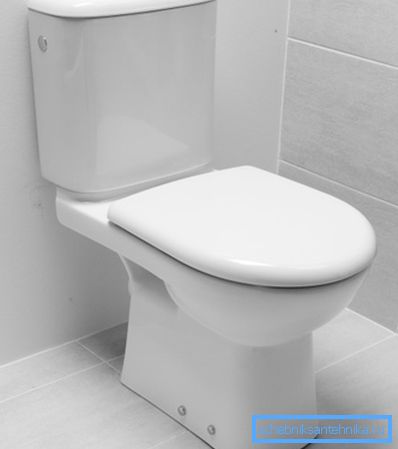
- Suspended or high. In this case, the water tank is connected to the toilet bowl with a special pipe, and the tank for the Soviet toilet bowl was also installed in the same way. This design gives its special advantages:
- enhanced drainage, which is especially important for houses with a weak pressure of the plumbing system;
- lack of additional pressure on the bowl;
- A great addition to the English style, classic or retro.
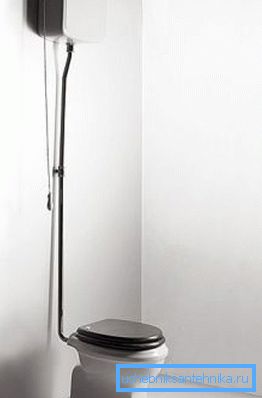
- Built-in or hidden. A cistern of this design hides in the wall behind a decorative finish, which, of course, requires additional costs, but it allows for greater aesthetics. It is the ideal solution for the interior, made in modern style.
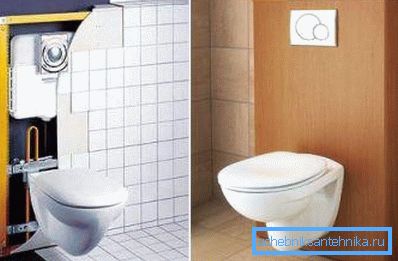
View of the trigger mechanism

The principle of operation remains the same, but the appearance of the element activating the function of draining may look different:
| Trigger Option | Comments |
| Button | It is most often found on continuous and hidden models, representing a small device of pressure action, which opens shut-off valves |
| Lever arm | It can be additionally equipped with a chain for ease of use and, as a rule, is used in suspended overhead devices. |
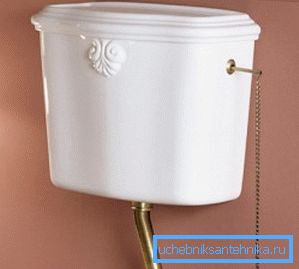
Tip: It is recommended to choose a double-action launch system, in which one activation mode allows you to drain only half of the tank, and the second - the entire volume. This will allow more economical use of water.
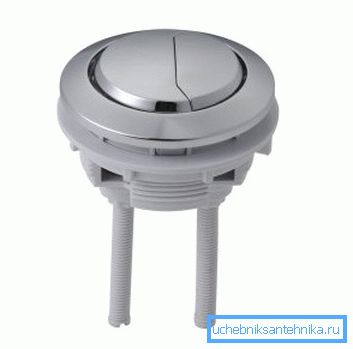
Material
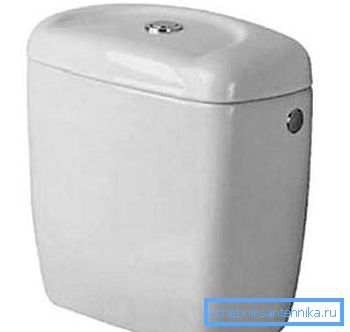
| Material | pros | Minuses |
| Cast iron |
|
|
| Faience |
|
|
| Ceramics |
|
|
| Plastic |
|
|
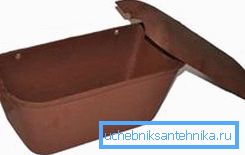
Tip: to create hidden structures, it is best to use plastic toilet cisterns for the toilet bowl, the shapes of which can exactly repeat the space allocated for them in the wall.
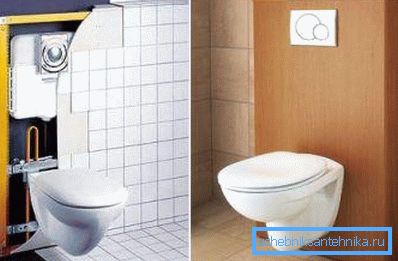
Design

If we talk about the structure of the cistern, the instruction identifies the two most important nodes that carry out its work and are periodically replaced:
- Bulk valve. This device is responsible for the flow of water into the tank itself and the control of its level. This process is regulated by means of a float, which, rising when the tank is filled, reaches a certain point at a certain point and provokes shutoff of the liquid supply.
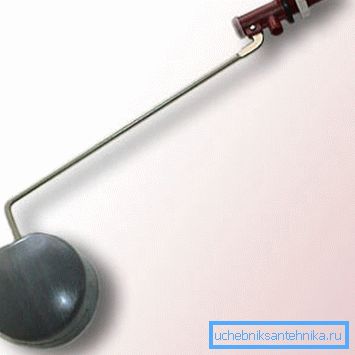
- Drain valve. It is presented in the form of valves, equipped with activating its opening buttons. It is closely interconnected with the overflow device, which removes excess water into the sewer system.
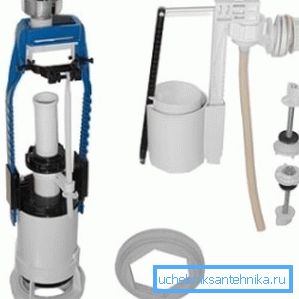
Conclusion
The drain tank of a toilet bowl can be executed from various materials, to have different ways of installation and starting mechanisms. But at the same time the internal structure and principle of operation always remain the same.

The video in this article will introduce you to additional materials.
Choose and operate plumbing equipment correctly.